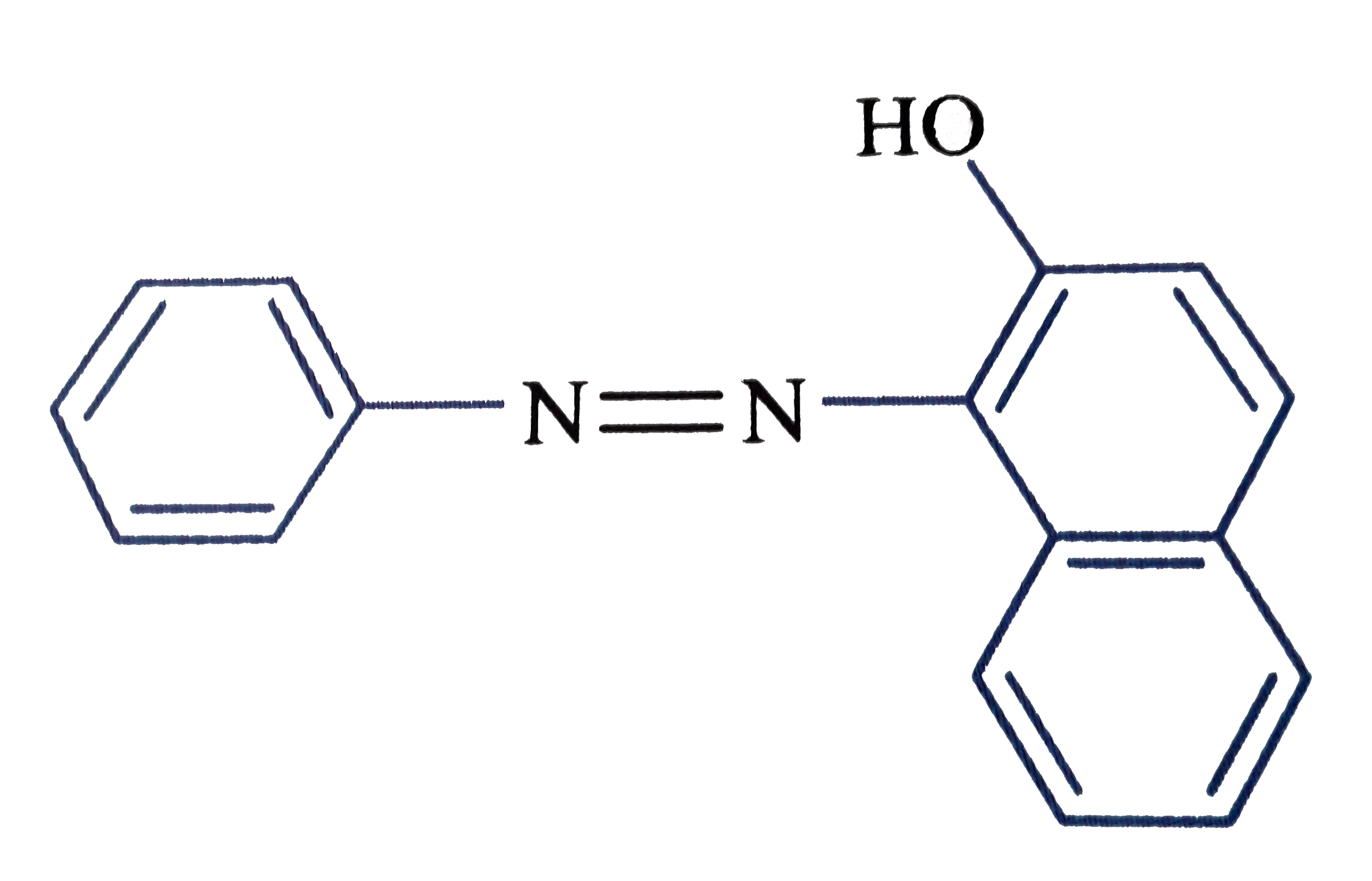In Balz-Schiemann reaction, benzene diazonium chloride reacts with
KI
CuCN/KCN
HBF4
HBF4 and NaNO2,Cu
The correct Answer is:C
Step-by-Step Solution:
1. Understanding the Balz-Schiemann Reaction:
The Balz-Schiemann reaction involves the conversion of benzene diazonium chloride into fluorobenzene. This reaction is significant in organic chemistry for introducing fluorine into aromatic compounds.
2. Identifying the Reactants:
In this reaction, benzene diazonium chloride (C6H5N2Cl) is the starting material. The key reagent that reacts with it in the Balz-Schiemann reaction is hydrogen tetrafluoroborate (HBF4).
3. Reaction Mechanism:
When benzene diazonium chloride reacts with HBF4, the diazonium group (N2) is replaced by a fluorine atom. The reaction can be summarized as follows:
C6H5N2Cl+HBF4→C6H5F+N2+BF3
Here, fluorobenzene (C6H5F) is formed, along with nitrogen gas (N2) and boron trifluoride (BF3).
4. Conclusion:
Based on the reaction, the correct answer to the question is that benzene diazonium chloride reacts with HBF4 in the Balz-Schiemann reaction to produce fluorobenzene.
Final Answer:
Benzene diazonium chloride reacts with HBF4 in the Balz-Schiemann reaction.
---
The Balz-Schiemann reaction involves the conversion of benzene diazonium chloride into fluorobenzene. This reaction is significant in organic chemistry for introducing fluorine into aromatic compounds.
In this reaction, benzene diazonium chloride (C6H5N2Cl) is the starting material. The key reagent that reacts with it in the Balz-Schiemann reaction is hydrogen tetrafluoroborate (HBF4).
When benzene diazonium chloride reacts with HBF4, the diazonium group (N2) is replaced by a fluorine atom. The reaction can be summarized as follows:
C6H5N2Cl+HBF4→C6H5F+N2+BF3
Here, fluorobenzene (C6H5F) is formed, along with nitrogen gas (N2) and boron trifluoride (BF3).
Based on the reaction, the correct answer to the question is that benzene diazonium chloride reacts with HBF4 in the Balz-Schiemann reaction to produce fluorobenzene.
Benzene diazonium chloride reacts with HBF4 in the Balz-Schiemann reaction.
Topper's Solved these Questions
- ORGANIC COMPOUNDS CONTAINING NITROGEN BOOK - MODERN PUBLICATIONCHAPTER - ORGANIC COMPOUNDS CONTAINING NITROGEN EXERCISE - Competition File (B) MULTIPLE CHOICE QUESTIONS
70 Videos
- ORGANIC COMPOUNDS CONTAINING NITROGEN BOOK - MODERN PUBLICATIONCHAPTER - ORGANIC COMPOUNDS CONTAINING NITROGEN EXERCISE - Competition File (C) MULTIPLE CHOICE QUESTIONS
9 Videos
- ORGANIC COMPOUNDS CONTAINING NITROGEN BOOK - MODERN PUBLICATIONCHAPTER - ORGANIC COMPOUNDS CONTAINING NITROGEN EXERCISE - HIGHER ORDER THINKING SKILLS (ADVANCED LEVEL)
13 Videos
- HALOALKANES AND HALOARENESBOOK - MODERN PUBLICATIONCHAPTER - HALOALKANES AND HALOARENESEXERCISE - UNIT PRACTICE TEST
11 Videos
- POLYMERSBOOK - MODERN PUBLICATIONCHAPTER - POLYMERSEXERCISE - Competition file (OBJECTIVE TYPE QUESTIONS) (C. MULTIPLE CHOICE QUESTIONS)(Integer Type Questions)
6 Videos
Similar Questions
Knowledge Check
Benzene diazonium chloride is reacted with KI gives
AiodobenzeneBchlorobenzeneCbenzene diazonium chlorideDm-iodo benzene diazonium chlorideBond present in benzene diazonium chloride are
Aonly ionicBionic, covalent and co-ordinateConly covalentDionic and covalentBenzene diazonium chloride forms orange red dye with
APhenolBCresolCResorcinolDAll
What is the name of the reaction when benzene diazonium chloride is treated with cuprous chloride?
View SolutionQuestions based on Benzene diazonium chlorides
View SolutionThe colour of benzene diazonium chloride is
View SolutionReduction of benzene diazonium chloride with Zn/HCl gives
View SolutionThe

which is a red azo dye obtained on reacting benzene diazonium chloride with one of the following compounds.
View Solution
